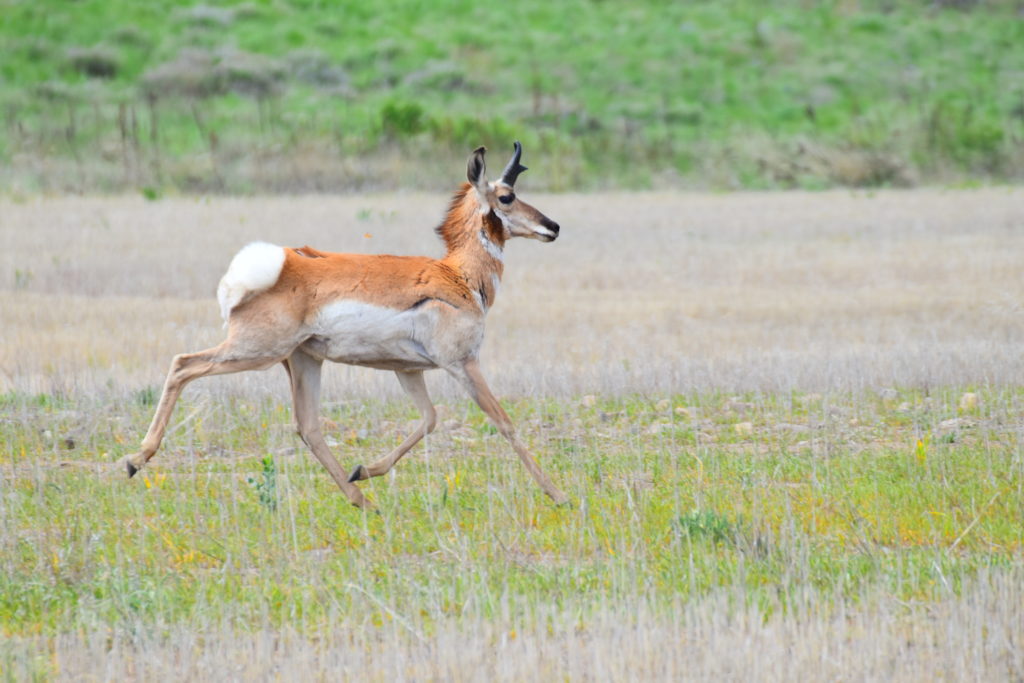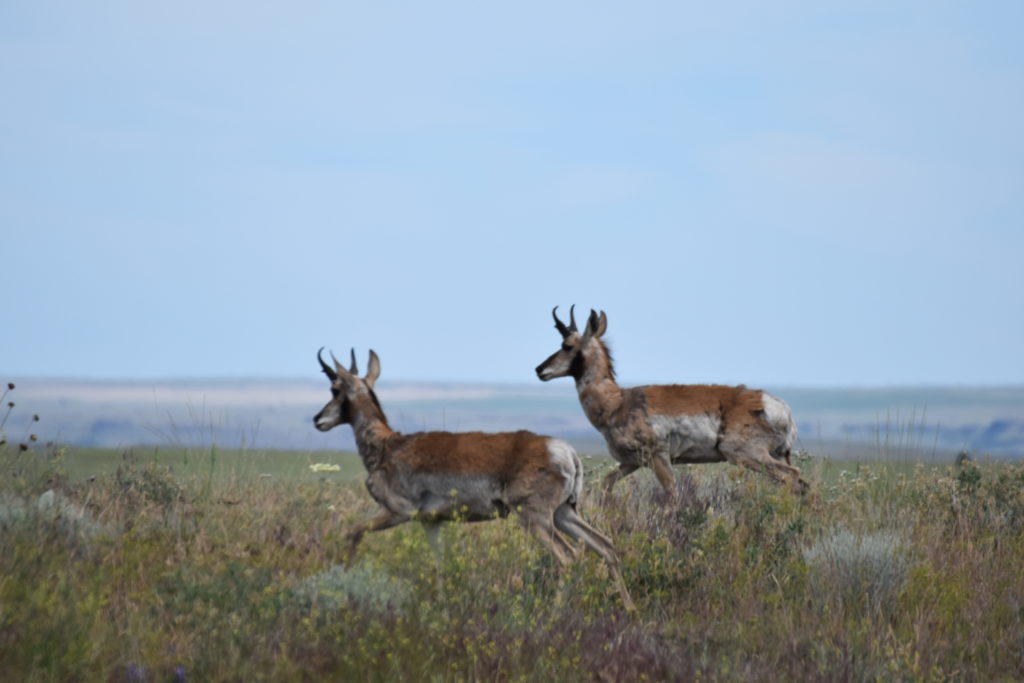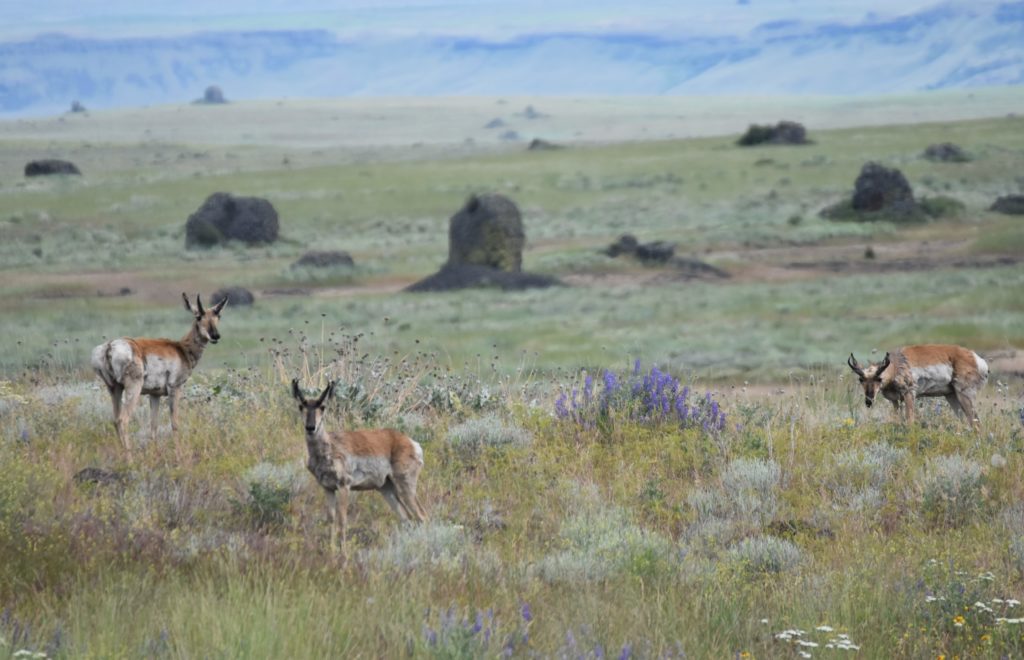It’s time to welcome the Western Hemisphere’s fastest land animal, the pronghorn antelope (Antilocapra americana), back to Washington! The animal can reach speeds of up to 60 mph and can cruise around 30 mph for extended periods of time.
This summer I caught glimpses of these small-hoofed mammals traveling over the shrub-steppe and grasslands of central Washington. Pronghorn have been extirpated (locally extinct) from Washington since the late 1800s due to habitat fragmentation and over hunting, but the confederated tribes of the Colville and Yakima nations are bringing pronghorn back to the state.
There have been several previous attempts to reintroduce pronghorn to central Washington. The Washington Department of Fish and Wildlife (WDFW) brought animals into the state in 1930, 1950, and again in 1968, but none of these reintroductions were successful.

Working with the Nevada Department of Wildlife, the Colville introduced 52 pronghorn in January 2016 and 98 in October 2017, while the Yakima brought 99 in 2011 and 49 this past January.
Rich Whitney, Colville wildlife manager, says that the tribe decided to reintroduce pronghorn after conducting habitat surveys and deeming that the landscape west of Nespelem could support a healthy population. He thinks the reintroduction of pronghorn matches the mission of the Fish and Wildlife Department of the Colville Tribes to “restore, protect, and maintain species in their usual home range.”
Stories have been passed down about the animals, and, although gone for over 100 years, Whitney states that “we are re-meeting our animal brothers and sisters.” This re-meeting also describes the tribes’ management strategy. Colville tribal biologists put GPS tracking collars on many of the adult animals to determine how they disperse on the land and what habitats they prefer. Whitney says they will use this, plus seasonal population counts, to determine a management plan with the goal of having a self-sustaining and hunt-able population. This data will also determine if the tribes will acquire more pronghorn from Nevada.

The tribes are actively working to improve wildlife habitat for pronghorn as well as other native wildlife. Sagebrush habitat is adapted to periodic fire and, like much of the west, the fire regimes have changed. The Colville is mowing old woody sagebrush stands to help release other vegetation, such as grass and young bitterbrush, an important winter forage for pronghorn.
According to Whitney, one of the biggest issues preventing pronghorn from moving across the landscape is fences. Although capable of leaping entire road cuts up to 20 feet, they will not jump over fences. They are adapted to open landscapes with no vertical obstructions. Traditional five-strand barbed wire fences cause injury and death, as these animals try to go under or through fences instead of over. Whitney has even found evidence of coyotes running pronghorn into fenced corners where they have no means of escape.
Colville wildlife biologists are removing or retrofitting over 400 hundred miles of fencing on their wildlife management units. Where possible they are replacing barbed wire fence with wildlife-friendly wooden split rail, and in many places they are clipping the bottom wire to allow the animals to pass under safely. They are also working with other landowners to create fencing that keeps cattle and horses in but allows wildlife to move freely.

Whitney states he has had a positive response from locals or at least “no complaints.” Whitney says that, although they have had some deaths, the released populations are doing well and have even ventured off the reservation boundaries. Several Colville pronghorn have recently swum across the Colombia and now small populations are ranging across Douglas and Grant counties. Whitney had a GPS-collared individual showing up north of Ritzville within the last month. He also states that there have been unconfirmed sightings of Yakima pronghorn near the Ryegrass Rest Area on I-90. With the movement of pronghorn off the reservation, WDFW is getting public input for the state’s management plan.
Where to See Pronghorn
The majority of Colville pronghorn are located south of Omak and east of Bridgeport on the sage-steppe of the Okanagan plateau. The many kettle ponds allow access to water year round, making this excellent habitat. Many of these ponds are visible from county roads, and scouting out some of these ponds early and late in the day could provide a sighting of a pair or larger herds of up to 20 pronghorn.
[Photos by Adam Gebauer]













